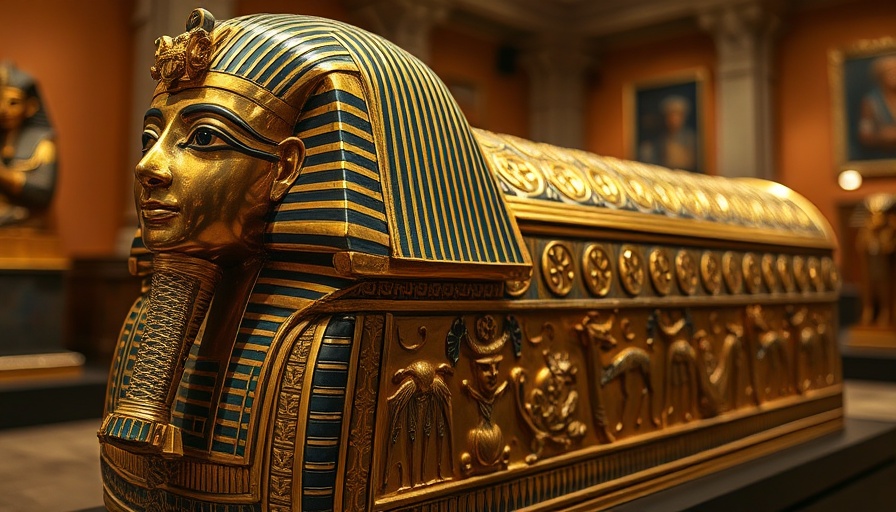
The Grand Egyptian Museum: A Catalyst for Sustainable Tourism in Egypt
As the sun sets over the Nile, casting its warm glow on Egypt's ancient wonders, a cultural revolution is stirring with the upcoming opening of the Grand Egyptian Museum (GEM) on November 1, 2025. This monumental project symbolizes not only a grand return of international tourism to one of the world’s most cherished historical sites but also underscores a commitment to sustainable and responsible travel.
A Surging Tourist Influx: New Beginnings for Egypt
With Egypt attracting an impressive 16 million international tourists in 2024—an increase of 6% from the previous year—and a projected 22% rise in tourist arrivals within the first seven months of 2025, optimism fills the air with a palpable sense of renewal. This burgeoning interest is invigorated by enticing partnerships, strategic investments, and the promise of fresh attractions like the GEM. With revenues hitting $9.6 billion in just part of the year, the stakes couldn't be higher as Egypt establishes itself as a beacon for eco-tourism and cultural exploration.
GEM: A Sustainable Approach to Cultural Preservation
The GEM, sprawling over a staggering area of 490,000 square meters and housing over 100,000 artifacts, is a pivotal development in revitalizing Egypt's tourism sector. This museum offers an immersive experience steeped in innovative technology while ensuring the conservation of historical treasures—one of tourism's most pressing challenges. Visitors will be treated to the complete collection of Tutankhamun’s belongings, displayed in a manner that honors both history and modernity.
A Cultural Hub and Employment Catalyst
Notably, the impact of the GEM extends beyond just tourism figures. It is poised to significantly enhance local economies through job creation in sectors ranging from hospitality to transportation. The tourism sector is already responsible for generating approximately 2.7 million jobs in Egypt, and the GEM is expected to amplify this number. Local artisans, tour guides, and businesses will benefit as the museum attracts diverse visitors, creating a ripple effect throughout the communities.
Challenges and Concerns from Local Stakeholders
The road to this cultural renaissance has not been devoid of obstacles. While many welcome the GEM and its potential for positive change, there have been notable objections from traditional local workers whose livelihoods have been affected by the redevelopment of the Giza Plateau. The introduction of controlled areas and alterations to visitor flows have sparked debate. This tension highlights the need for more comprehensive stakeholder engagement to balance the interests of tourism with those of the local economy.
Importance of Sustainable Practices in Tourism
As travelers become more conscious of their impact, destinations must adapt to meet the demand for responsible tourism. The GEM aims to be a model for sustainable travel, promoting eco-friendly practices through its operations and planning. Encouraging visitors to treat cultural assets with respect and enhancing the natural environment will be vital as Egypt strives to cement its place on the global tourism stage.
Future Predictions: The Path Toward 30 Million Visitors
Looking ahead, the Egyptian government’s ambitious goal of attracting 30 million visitors annually by 2032 represents a bold vision spearheaded by landmarks like the GEM. With visitors increasingly seeking experiences that promote cultural appreciation and environmental stewardship, Egypt’s path forward will hinge on integrating innovative sustainable practices within its tourism infrastructure.
As you book your next travel adventure, consider Egypt's incredible offerings. Engaging with the Grand Egyptian Museum not only immerses you in the splendor of ancient civilizations but also supports the ongoing efforts to protect and celebrate its rich heritage. The world awaits; are you ready to embark on this journey?
 Add Row
Add Row  Add
Add 




Write A Comment